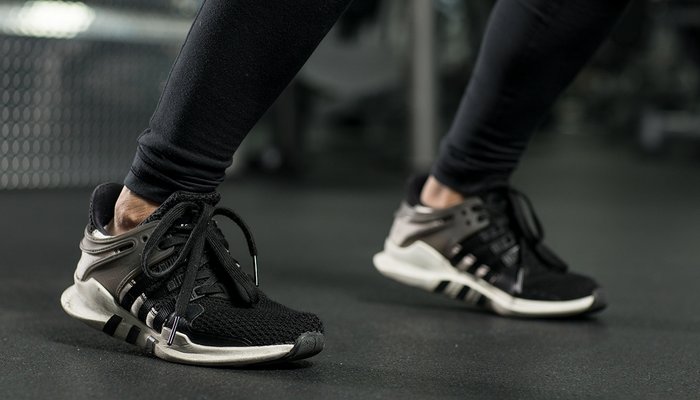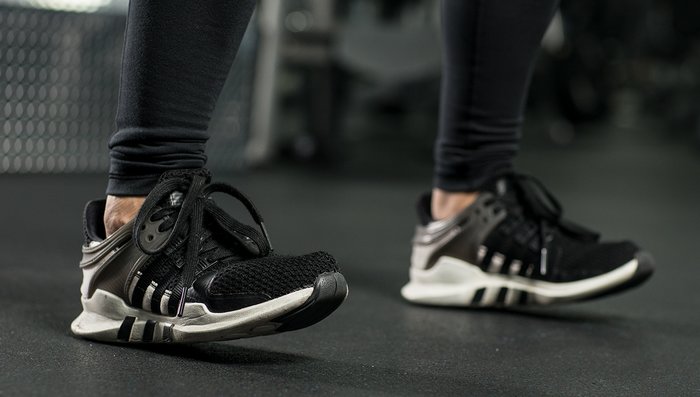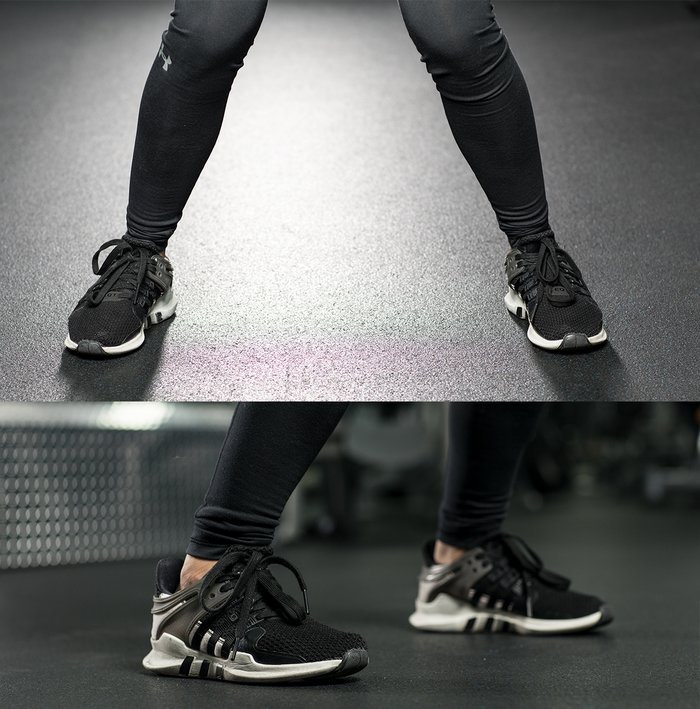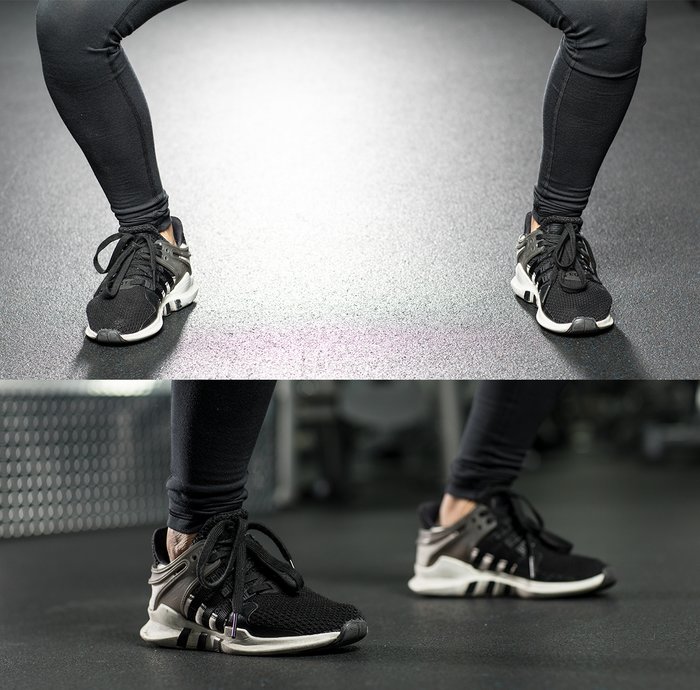For being the part of the body that makes it possible to do just about anything, feet don't get a lot of respect—especially in the gym. They can be full of foot fungus, they're smelly, and sometimes they're downright ugly. But when you want to make sure you're squatting with good form, your bare feet can be the stars of the show.
To the trained eye, foot movement reveals a lot about squatting form. Proper foot positioning decreases knee stress, properly aligns the hips, and promotes spinal health. In contrast, sloppy foot contact will alter the bar path, decrease your one-rep max, and increase your risk of non-traumatic lifting injuries.
It's hard to watch your own feet as you lift. Instead, have a friend videotape your feet as you perform the movement or lift under the watchful gaze of a movement professional. Start by squatting with an unweighted bar. If no faults are evident, add some weight and see if a foot fault reveals itself. Don't keep adding weight to try to force a fault; you just might be one of those lucky people who don't have any! To be sure, check to see if any one of these four things is happening as you squat.
Foot Fault 1: Are Your Heels Coming Unglued?
Heels lifting up during a squat is an indication that your body—and the barbell—is moving forward. You want to be as stable as possible during a squat and when the heel creeps up, you instantly become less steady. Ideally, the barbell should be aligned above your hips and ankles and steady over your entire foot. When weight shifts outside of this downward vertical line, the injury risk to your knees, hips and lower back skyrockets. To be clear, experiencing pain when you lift is not "part of the experience." It is always an indicator of poor form.

One quick way to remedy this fault is to "tripod" each foot by establishing three contact points on the ground: the heel, the ball of the foot, and the outer ball of the foot.
Spread your toes and glue these three points onto the floor to create a solid foundation from which to lift. If you don't consistently establish this solid contact, then you may become prone to:
- Medial meniscal pain (inner knee)
- Hip impingement (front of hip/groin)
- Lower back pain
These conditions are brought up all the time in weightlifting forums by lifters who aren't sure where their pain is coming from. Although many lifters don't consider these "injuries," because of the lack of trauma, they are exactly that. These injuries come, not from trauma, but over time from poor form. They are extremely preventable and usually correctable, once you establish proper foot contact.
Foot Fault 2: Are Your Toes Blowin' in the Wind?
When your toes come unglued, we have the opposite problem. If the toes are not planted firmly on the floor, it can cause you to sit too far back into your heels. This will result in an overworked posterior chain.

That's right: You can over-train your posterior chain if you're crushing it day in, day out—especially if you're doing lots of these exercises:
- Back squats (heel dominance)
- Romanian deadlifts (heel dominance)
- Reverse hyperextensions
- Barbell hip thrusts
- Supermans
To remedy the lifted toe fault, use the tripod technique described above, and practice towel toe curls to strengthen your feet.
Foot Fault 3: Are Your Arches Collapsing?
The collapse of the arches will allow the knees to cave. Poor knee position is a result of poor function or position of the joints above or below the knee. In this case, the culprit is the foot and ankle complex. There are a couple of ways to tell if someone's arches are collapsing:
- Look at the outer foot. Does it lose contact with the ground?
- Look at the inner foot. Does the arch lose height to any degree?

Try this right now: sit down and tripod your foot. Force the knee to cave inward and see if you can feel your foot-contact pressures change. If you can, try one of these adaptations:
- Make sure your foot is fully tripoded
- Spread your toes as wide as possible while gripping the floor
- Push your foot down into the floor with more pressure
When you correct arch collapse, you can also remedy upstream issues, including:
- Knee cave
- Hip internal rotation
- Leg drive dominance
Foot Fault 4: Are You Amplifying Your Arches?
The three foot faults we've already discussed are the result of a lack of intention while executing the movement. Raising the arches, on the other hand, is a conscious overcorrection and a learned behavior. More than one lifter has been coached to squat with the "push the knees out" verbal cue to correct knee cave. The coaching intention is good, but the end result is a movement pattern that doesn't allow for proper staking of the knee.

The good news is that, as with the other foot faults, this can be corrected by using the tripod technique. When you correct any of these faults by using this technique, you are essentially creating a solid foundation for your body to drive the weights toward the sky.

